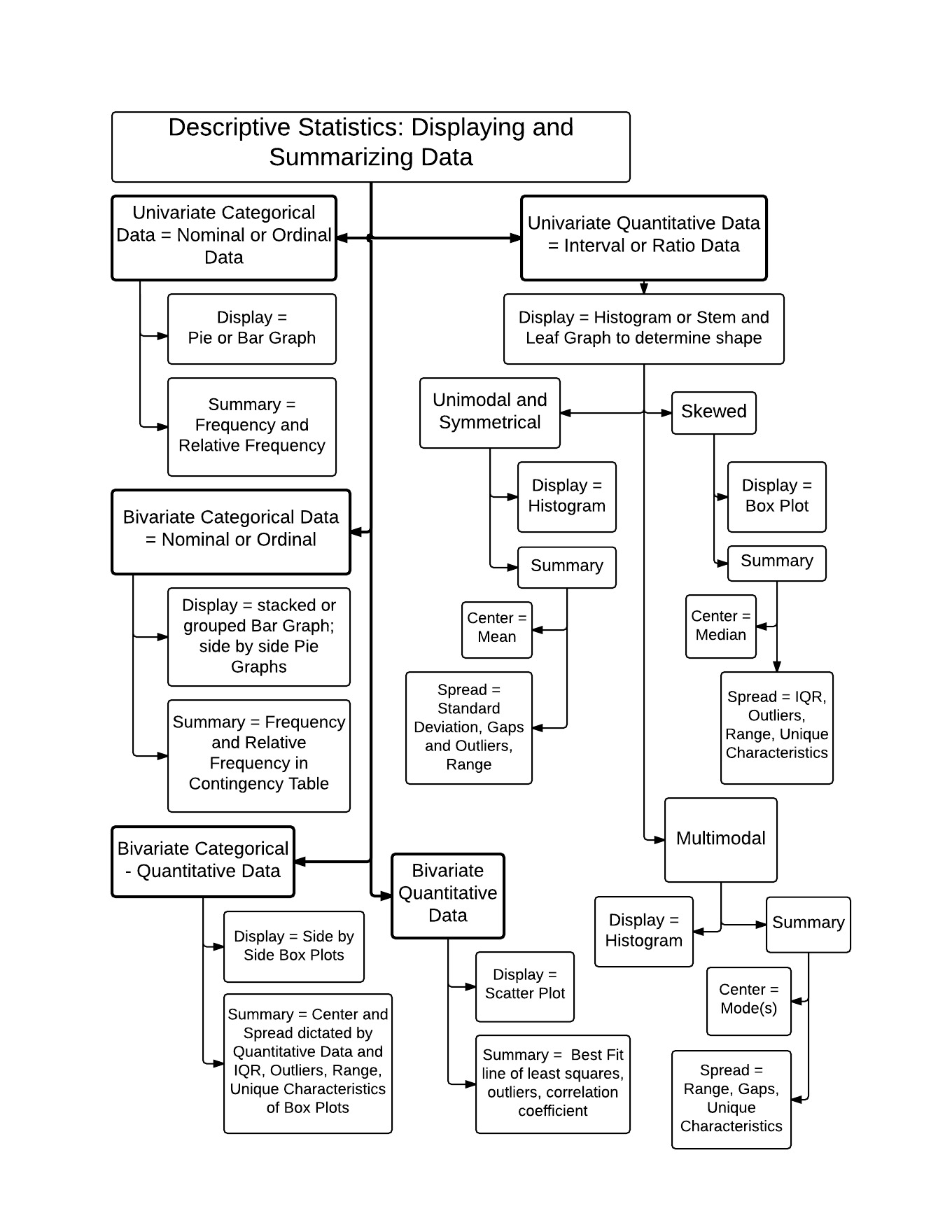-
Home
- Collaborative statistics using
- Sampling and data
- Sampling and data: summary
This module provides an outline/review of key concepts related to statistical sampling and data.
Average
- A number that describes the central tendency of the data. There are a number of specialized averages, including the arithmetic mean, weighted mean, median, mode, and geometric mean.
Continuous random variable
- A random variable (RV) whose outcomes are measured. Example: The height of trees in the forest is a continuous RV
Cumulative relative frequency (cum. rel. freq. or cum rf)
- An accumulation of the previous relative frequencies. The Cumulative Relative Frequency is the sum of the relative frequencies for all values that are less than or equal to the given value.
Data
- A set of observations (a set of possible outcomes). Most data can be put into two groups: qualitative (hair color, ethnic groups and other attributes of the population) and quantitative (distance traveled to college, number of children in a family, etc.). Quantitative data can be separated into two subgroups: discrete and continuous. Data is discrete if it is the result of counting (the number of students of a given ethnic group in a class, the number of books on a shelf, etc.). Data is continuous if it is the result of measuring (distance traveled, weight of luggage, etc.)
- Quantitative Data (a number)
- Discrete (You count it.)
- Continuous (You measure it.)
- Qualitative Data (a category, words)
Discrete random variable
- A random variable (RV) whose outcomes are counted.
Frequency (freq. or f)
- The number of times an answer occurs
Parameter
- A number that is a property of the population.
Population
- The collection, or set, of all individuals, objects, or measurements whose properties are being studied.
Probability
- Mathematical tool used to study randomness. A number between 0 and 1, inclusive, that gives the likelihood that a specific event will occur.
Proportion
- As a number: A proportion is the number of successes divided by the total number in the sample.
- As a probability distribution: Given a binomial random variable (RV), X ∼ B(n,p), consider the ratio of the number X of successes in n Bernouli trials to the number n of trials.
- p = x/n
Random sampling
- Each member of the population has an equal chance of being selected
Relative frequency (rel. freq. or rf)
- The proportion of times an answer occurs
- Can be interpreted as a fraction, decimal, or percent
Sample
- A portion of the population understudy. A sample is representative if it characterizes the population being studied.
Sampling
-
With Replacement : A member of the population may be chosen more than once
-
Without Replacement : A member of the population may be chosen only once
Sampling methods
- Random
- Simple random sample
- Stratified sample
- Cluster sample
- Systematic sample
- Not Random
Statistic
- A numerical characteristic of the sample. A statistic estimates the corresponding population parameter. For example, the average number of full-time students in a 7:30 a.m. class for this term (statistic) is an estimate for the average number of full-time students in any class this term (parameter).
Statistics
- Deals with the collection, analysis, interpretation, and presentation of data
The 5 w's
- Who
- What
- Why
- Where
- When
- How
Variable
- A characteristics of interest for each person or thing in a population. Variables may be numerical or categorical.
- Numerical variables take on values with equal units such as weight in pounds and time in hours.
- Categorical variables place the person or thing in to a category.
Data decision tree

Source:
OpenStax, Collaborative statistics using spreadsheets. OpenStax CNX. Jan 05, 2016 Download for free at http://legacy.cnx.org/content/col11521/1.23
Google Play and the Google Play logo are trademarks of Google Inc.

